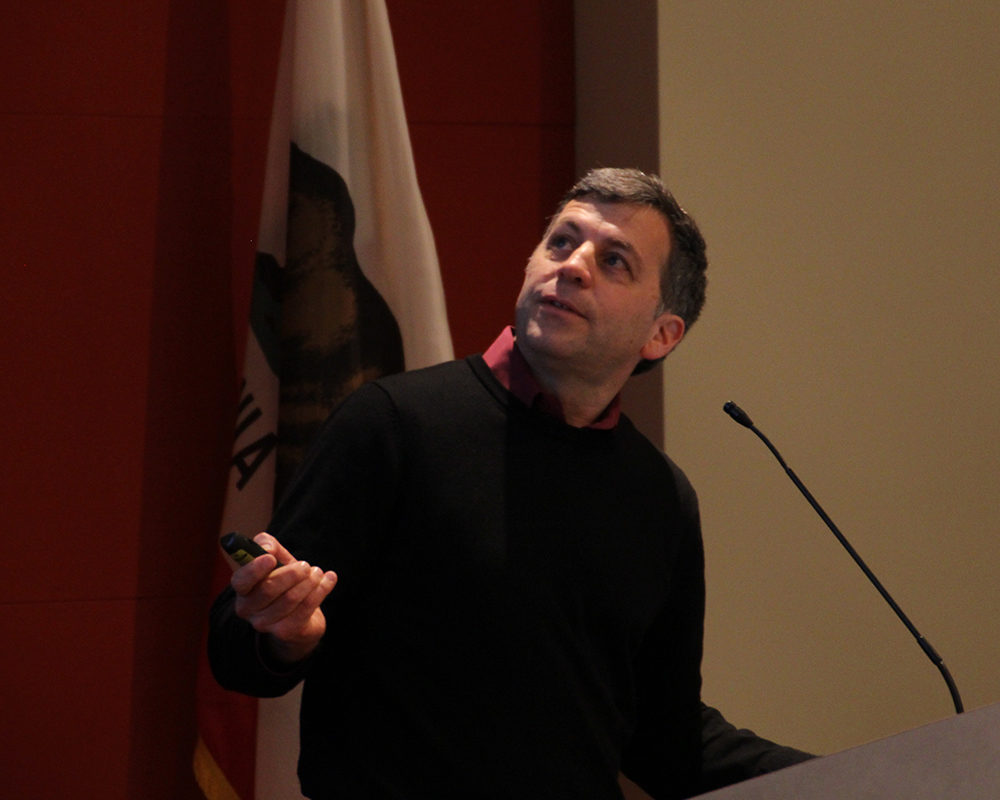
Retinoblastoma is a retinal tumor usually affecting children one to two years of age. Although rare, it is the most common malignant tumor of the eye in children. Left untreated, retinoblastoma can be fatal or result in blindness. It has also played a special role in understanding cancer, because retinoblastomas have been found to develop in response to the mutation of a single gene — the RB1 gene — demonstrating that some cells are only a step away from developing into a life-threatening malignancy.
David E. Cobrinik of The Vision Center at Children’s Hospital Los Angeles (CHLA), together with colleagues at Memorial Sloan-Kettering Cancer Center, has answered the long-standing question of why mutations to the RB1 gene primarily cause tumors of the retina and not of other cell types. His study — which could reveal new cellular signaling pathways relevant to retinal development, cancer development and, ultimately, the development of novel therapies — is published in this week’s early on line issue of the journal Nature.
“These findings significantly advance our understanding of cancer, not only because they solve the RB riddle, but also because they more generally imply that cancers can develop through the collaboration between a cancer-causing mutation — in this case, inactivation of the RB1 gene — and cell type-specific circuitry,” said Cobrinik, who also an investigator with USC Stem Cell and The Saban Research Institute of CHLA and associate professor of Ophthalmology at USC Eye Institute, Keck School of Medicine of USC.
The RB1 gene encodes a tumor suppressor protein, referred to as Rb, which prevents excessive cell growth by inhibiting cell cycle progression until a cell is ready to divide. If both alleles of the RB1 gene are mutated early in life, the Rb protein is inactivated, resulting in development of retinoblastoma cancers. (While the Rb protein regulates proliferation in many cell types, only cells in the retina routinely form cancers when the function of the RB1 gene is lost.)
Cobrinik and colleagues discovered that retinoblastomas originate in cone photoreceptor precursors, and their study explains why retinoblastomas originate in these precursor cells. Cone cells, or cones, are one of the two types of photoreceptor cells in the retina, and are responsible for color vision. A cone precursor is an immature cone cell which is not yet fully differentiated.
The study indicates that cone precursors prominently express key, cancer-related proteins that enable proliferation and suppress apoptosis, or programmed cell death. Meanwhile, the role of the Rb protein is to hold back such proliferation — which means that the loss of Rb alone is sufficient to allow unchecked cell proliferation, causing retinoblastomas to form.
“We showed that the cone precursors’ normal developmental program collaborates with RB1 mutations to deregulate cell growth,” Cobrinik explained. “In other words, loss of the RB1 gene results in abnormal proliferation because the cone precursor cells lack a self-monitoring ‘surveillance system’ — which would normally cause aberrantly proliferating cells to undergo apoptosis. Instead, cells are able to divide uncontrollably and eventually become cancerous.”
Additional contributors include first author Xiaoliang L. Xu, Lu Wang, David H. Abramson and Suresh C. Jhanwar, Memorial Sloan-Kettering Cancer Center, New York; Hardeep P. Singh and Dong-Lai Qui, The Saban Research Institute of Children’s Hospital Los Angeles; and Bradford K. Poulos, Albert Einstein College of Medicine. Funding for the study was provided in part by NIH grant R01CA137124.
Researchers at Children’s Hospital Los Angeles were among the first to isolate and clone the RB1 gene. The Vision Center at CHLA is one of the largest clinical programs in the U.S. for the treatment of retinoblastoma, was one of the first sites in the nation to offer gene testing for all retinoblastoma patients, and the first to offer a prenatal diagnosis for the disease. In June of this year, a team of physicians and scientists here announced development of a retinoblastoma next generation (RB1 NextGen) sequencing panel. CHLA became the first place to offer this whole-gene sequencing to patients and family members who may also have inherited the gene mutation, placing them at high risk.
